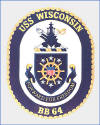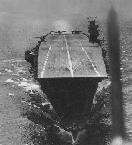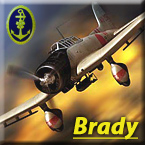Tiornu
Posts: 1126
Joined: 4/1/2004
Status: offline

|
The Dunnigan & Nofi book is presumably a decent wrap-up of the history of the Pacific War, but it is not good as a technical guide. I know that Nofi has loads of research under his belt, but I believe it skews toward history rather than designs etc.
In case I haven't posted this before, here's a survey of some of the more important guns from WWII. PLEASE read the caveats at the beginning and understand that these are benchmarks indicating maximum performance under ideal conditions.
http://www.geocities.com/kop_mic/
I myself know little about ballistics, and Rob Lundgren did all the hard work in putting the tables together using Nathan's formulae. I'm allergic to math.
For those interested in further battleship reading, the three Garzke & Dulin books are required reading. They cover all the modern ships. Friedman has a general Battleship Design and Development book, and he also wrote the definitive US design history. For British ships, you can look for RA Burt and the Raven & Roberts books. There's no English-language volume that focuses on French ships, but if you read French, go with Robert Dumas. For the Italians, again, you gotta go Italian and read Le Navi di Linea Italiane. The Soviets are covered well in Steve McLaughlin's recent book. Whitley is the best author on German ships, or you can opt for the various Koop & Schmolke volumes. There is no complete survey for Japanese battleships. Not yet.
Yamato had some serious issues in her TDS. One is the faulty joint mdiehl already mentioned. This was a flaw that the Japanese knew about, but they simply lacked time to design something better. In addition, the Japanese had extreme and unjustified ideas about counterflooding. This prompted them to adopt large void spaces in the outer layers of their TDS. The result was two-fold: large initial lists and difficult getting sufficient water pumped for counterflooding. In fact, Japanese DC was inferior in general.
Of course, when you've got a 64,000-ton ship, you can make up for some mistakes. Yamato and Musashi both stood up reasonably well amid their final air attacks. It should be remembered that the torpedoes that sank these ships were 2-3 times more powerful than ones that hit PoW, Oklahoma, and Bismarck.
The SoDak/Iowa TDS had some glitches, and folks may try to tell you the system was FLAWED (neon letters preferred). In fact, the problem was minimal, and American DC tended to be quite good.
|
 Printable Version
Printable Version












 I find the subject of BB ballistics is fascinating and would like to read more. Apart from the combined fleet site where do you suggest looking?
I find the subject of BB ballistics is fascinating and would like to read more. Apart from the combined fleet site where do you suggest looking? 





 New Messages
New Messages No New Messages
No New Messages Hot Topic w/ New Messages
Hot Topic w/ New Messages Hot Topic w/o New Messages
Hot Topic w/o New Messages Locked w/ New Messages
Locked w/ New Messages Locked w/o New Messages
Locked w/o New Messages Post New Thread
Post New Thread